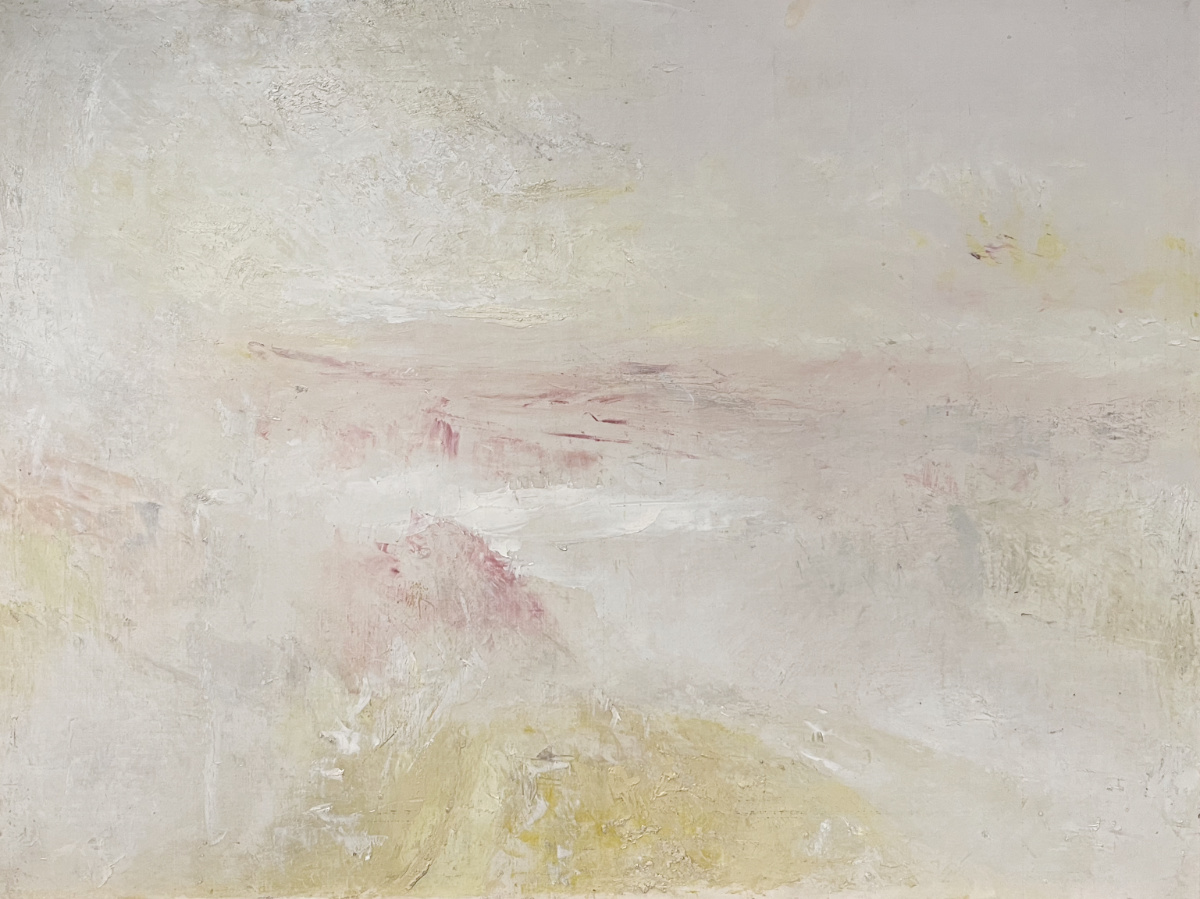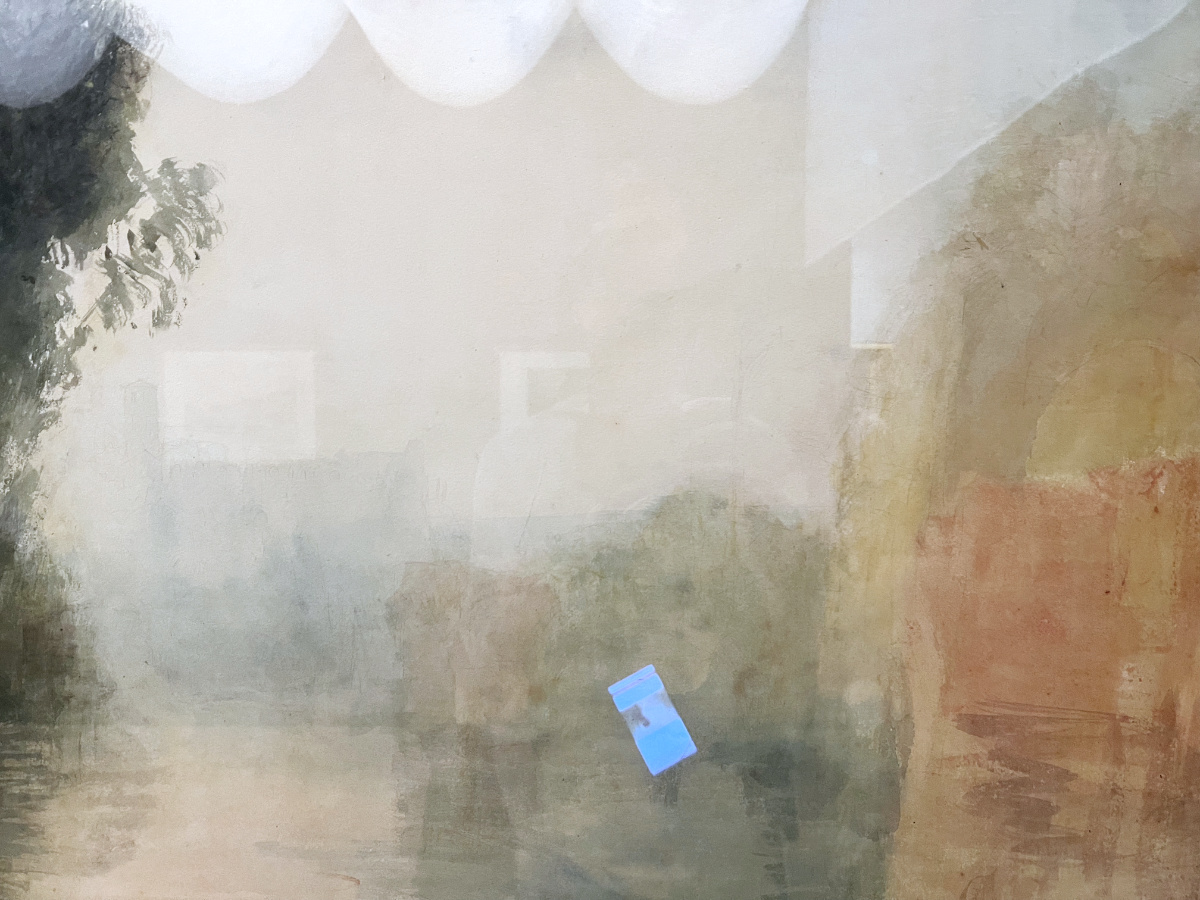Turner
Joseph Mallord William Turner. How grand. How sovereign. I’m deeply impressed and honestly moved. Born 1775 in an age of purest romanticism he started painting like an impressionist. Out of nowhere he was chasing for color, for light and nothing more than that. Objects, people, scenes, historical events quickly became just bystanders for him. At least that’s the private Mr. Turner. His public appearance held on to more traditional concepts and approaches for a little longer. Young Turner entered the Royal Academy at the age of only 14. His first paintings were accepted for the Royal Academy summer exhibition only a year later. Even at that young age Joseph Mallord William Turner was already a star, today we would call him a superhero.
 1/50 s, f/1.6, ISO 250, 53 mm, iPhone 12 Pro Max
1/50 s, f/1.6, ISO 250, 53 mm, iPhone 12 Pro Max
Turner was painting formally, strategically and architecturally in the beginning. 1807 he even became a professor for perspective at the Royal Academy. His early work is rather traditional. There are a lot of similarities to other romantic painters like Caspar David Friedrich who also were very much interested in putting nature, hilly landscapes, the sky and all the natural elements front and center.
Only privately and almost secretly he explored his new way of seeing and painting. Paintings about the unearthly city of Venice became his first subject that allowed him to explore his new vision with a broader audience. His whirling, cloudy, athmospheric skys became more and more dominant, pushing all the rest of his scenes into an almost neglected background. The paintings of Venice became his cornerstone and they became surprisingyl successful.
Maybe it’s been this unforseeable success, maybe it’s just been his continous search for supernatural expression, his hunt for color and light that led him towards the direction he then and forever took. Joseph Mallord William Turner became the first abstract impressionist at a time where neither abstraction nor impressionism have seen the light of day. Not that he was just a few years ahead of his time, it’s been decades, it’s been almost a whole century until other true greats like Claude Monet could see the world like he did, as an almost magical world composed only out of color and light.
 J.M.W. Turner, Snow Storm - Steam-Boat off a Harbour’s Mouth, 1842, 1/60 s, f/2.2, ISO 500, 64 mm, iPhone 12 Pro Max
J.M.W. Turner, Snow Storm - Steam-Boat off a Harbour’s Mouth, 1842, 1/60 s, f/2.2, ISO 500, 64 mm, iPhone 12 Pro Max
While other romantics helplessly tried to hold on to their good old lives, William Turner was quite the opposite. He was fascinated by and embraced technological progress and the machine age. Steam boats and railways only meant more dramatic clouds for him to paint. His only direction seemed to be forward even if he remained this classic British elder states man for all of his life.
 J.M.W. Turner, Sunset From the Top of the Rigi, 1844, 1/71 s, f/1.6, ISO 125, 25 mm, iPhone 12 Pro Max
J.M.W. Turner, Sunset From the Top of the Rigi, 1844, 1/71 s, f/1.6, ISO 125, 25 mm, iPhone 12 Pro Max
Turner was successful from the very beginning. He always had a good sense of his audience and was able to sell his paintings through all the different periods of his life. Especially the paintings in and about Venice quickly became rather popular and encouraged Turner to continue his journey more and more away from just a literal expression to a more free and intuitive approach. He even built his own studio and exhibition hall to show his work to potential customers.
This success made it possible for him to travel a lot, through all of Europe. Turner was a keen traveller during a time where travelling through Europe wasn’t easy and natural at all. He visited France and Switzerland, the Louvre in Paris, the iconic landscapes in Germany but also Italy and Venice, where he stayed several times. During these trips he filled many notebooks with pencil sketches and watercolors.
 Detail of J.M.W. Turner, Study for ‘Landscape: Composition of Tivoli’, 1817, 1/33 s, f/1.6, ISO 400, 25 mm, iPhone 12 Pro Max
Detail of J.M.W. Turner, Study for ‘Landscape: Composition of Tivoli’, 1817, 1/33 s, f/1.6, ISO 400, 25 mm, iPhone 12 Pro Max
But at the same time his progressive way of using just light and color as his main subjects was also criticised as “absurd extravagances”. Sir George Beaumont, one of his fellows from the Royal Academy, even described his paintings as “blots”. John Ruskin on the other hand was one of Turner’s most influential supporters. In his eyes Turner was the artist that could most “stirringly and truthfully measure the moods of Nature”. I guess it will always remain a mystery how much Turner’s style, especially in later life, his way of seeing the world, his simplifications, his broad strokes, his cloudy atmospherics was just that, a certain style, like a trick or a certain manner that sold well. Or if Turner indeed was that mastermind, that early adopter or even inventor of modernity during an age where modernism was still decades away.
Currently about 80 of Turner’s paintings are on display in the underground Kunstbau of the Lenbachhaus in Munich. The temporary exhibition there is titled Turner. Three Horizons and was made possible in cooperation with the Tate Britain, London. That’s where I had the chance to see a representative collection of his works for the very first time. If you want to explore William Turner by yourself the best place to go to is indeed the Tate Britain in London. They also offer an almost complete collection of his works online.